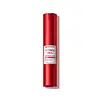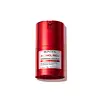What's inside
What's inside
 Key Ingredients
Key Ingredients

 Benefits
Benefits

 Concerns
Concerns

 Ingredients Side-by-side
Ingredients Side-by-side

Cyclopentasiloxane
EmollientDimethicone
EmollientDimethicone/Vinyl Dimethicone Crosspolymer
Skin ConditioningCaprylic/Capric Triglyceride
MaskingMauritia Flexuosa Fruit Oil
Skin ConditioningSimmondsia Chinensis Seed Oil
EmollientDimethiconol
EmollientHydroxypinacolone Retinoate
Skin ConditioningPhytol
EmollientOlea Europaea Fruit Oil
MaskingRetinyl Linoleate
Skin ConditioningUbiquinone
AntioxidantBisabolol
MaskingSqualane
EmollientDimethyl Isosorbide
SolventC12-15 Alkyl Benzoate
AntimicrobialDicaprylyl Ether
EmollientRetinol
Skin ConditioningPhytosteryl/Octyldodecyl Lauroyl Glutamate
Skin ConditioningTocopherol
AntioxidantRetinal
Skin ConditioningBHT
AntioxidantSolanum Lycopersicum Fruit Extract
AntioxidantAcmella Oleracea Extract
Skin ProtectingPolyglyceryl-4 Oleate
EmulsifyingOlea Europaea Leaf Extract
PerfumingMyrtus Communis Leaf Extract
PerfumingDimethylmethoxy Chromanol
AntioxidantSorbitan Laurate
EmulsifyingC18-36 Acid Glycol Ester
EmollientC18-36 Acid Triglyceride
EmollientLactic Acid
BufferingPalmitoyl Tripeptide-1
Skin ConditioningPalmitoyl Tetrapeptide-7
Skin ConditioningCanola Oil
EmollientDaucus Carota Sativa Root Extract
Skin ConditioningHelianthus Annuus Seed Oil
EmollientAroma
Beta-Carotene
Skin ConditioningTocopheryl Acetate
AntioxidantTridecane
PerfumingDaucus Carota Sativa Seed Oil
EmollientUndecane
EmollientCyclopentasiloxane, Dimethicone, Dimethicone/Vinyl Dimethicone Crosspolymer, Caprylic/Capric Triglyceride, Mauritia Flexuosa Fruit Oil, Simmondsia Chinensis Seed Oil, Dimethiconol, Hydroxypinacolone Retinoate, Phytol, Olea Europaea Fruit Oil, Retinyl Linoleate, Ubiquinone, Bisabolol, Squalane, Dimethyl Isosorbide, C12-15 Alkyl Benzoate, Dicaprylyl Ether, Retinol, Phytosteryl/Octyldodecyl Lauroyl Glutamate, Tocopherol, Retinal, BHT, Solanum Lycopersicum Fruit Extract, Acmella Oleracea Extract, Polyglyceryl-4 Oleate, Olea Europaea Leaf Extract, Myrtus Communis Leaf Extract, Dimethylmethoxy Chromanol, Sorbitan Laurate, C18-36 Acid Glycol Ester, C18-36 Acid Triglyceride, Lactic Acid, Palmitoyl Tripeptide-1, Palmitoyl Tetrapeptide-7, Canola Oil, Daucus Carota Sativa Root Extract, Helianthus Annuus Seed Oil, Aroma, Beta-Carotene, Tocopheryl Acetate, Tridecane, Daucus Carota Sativa Seed Oil, Undecane
Water
Skin ConditioningButylene Glycol
HumectantGlycerin
HumectantDimethicone
EmollientPentylene Glycol
Skin ConditioningSqualane
EmollientNiacinamide
SmoothingIsononyl Isononanoate
EmollientC12-20 Acid PEG-8 Ester
EmulsifyingNylon-12
Cetyl Alcohol
Emollient1,2-Hexanediol
Skin ConditioningPEG-100 Stearate
Hydroxyacetophenone
AntioxidantHydroxyethylpiperazine Ethane Sulfonic Acid
BufferingAmmonium Acryloyldimethyltaurate/Beheneth-25 Methacrylate Crosspolymer
Emulsion StabilisingSodium Polyacryloyldimethyl Taurate
Emulsion StabilisingAdenosine
Skin ConditioningHydroxydecyl Ubiquinone
AntioxidantRetinyl Palmitate
Skin ConditioningTocopherol
AntioxidantPotassium Cetyl Phosphate
EmulsifyingPolysorbate 20
EmulsifyingRetinol
Skin ConditioningHydrogenated Polydecene
EmollientSophora Flavescens Root Extract
AntioxidantCoco-Glucoside
CleansingHydroxypropyl Cyclodextrin
MaskingTribulus Terrestris Fruit Extract
Skin ConditioningPentaerythrityl Tetra-Di-T-Butyl Hydroxyhydrocinnamate
AntioxidantDipropylene Glycol
HumectantCornus Officinalis Fruit Extract
Skin ConditioningFullerenes
AntimicrobialCopper Tripeptide-1
Skin ConditioningHydrolyzed Sodium Hyaluronate
Skin ConditioningPinus Densiflora Leaf Extract
AntimicrobialDisodium EDTA
Trideceth-10
CleansingSodium Hyaluronate
HumectantLactobacillus Ferment
Skin ConditioningBHT
AntioxidantQuaternium-73
BHA
AntioxidantTetrapeptide-4
Skin ConditioningPalmitoyl Tripeptide-8
Skin ConditioningPhytol
EmollientArginine/Lysine Polypeptide
Skin ConditioningPvp
Emulsion StabilisingWater, Butylene Glycol, Glycerin, Dimethicone, Pentylene Glycol, Squalane, Niacinamide, Isononyl Isononanoate, C12-20 Acid PEG-8 Ester, Nylon-12, Cetyl Alcohol, 1,2-Hexanediol, PEG-100 Stearate, Hydroxyacetophenone, Hydroxyethylpiperazine Ethane Sulfonic Acid, Ammonium Acryloyldimethyltaurate/Beheneth-25 Methacrylate Crosspolymer, Sodium Polyacryloyldimethyl Taurate, Adenosine, Hydroxydecyl Ubiquinone, Retinyl Palmitate, Tocopherol, Potassium Cetyl Phosphate, Polysorbate 20, Retinol, Hydrogenated Polydecene, Sophora Flavescens Root Extract, Coco-Glucoside, Hydroxypropyl Cyclodextrin, Tribulus Terrestris Fruit Extract, Pentaerythrityl Tetra-Di-T-Butyl Hydroxyhydrocinnamate, Dipropylene Glycol, Cornus Officinalis Fruit Extract, Fullerenes, Copper Tripeptide-1, Hydrolyzed Sodium Hyaluronate, Pinus Densiflora Leaf Extract, Disodium EDTA, Trideceth-10, Sodium Hyaluronate, Lactobacillus Ferment, BHT, Quaternium-73, BHA, Tetrapeptide-4, Palmitoyl Tripeptide-8, Phytol, Arginine/Lysine Polypeptide, Pvp
Ingredients Explained
These ingredients are found in both products.
Ingredients higher up in an ingredient list are typically present in a larger amount.
BHT is a synthetic antioxidant and preservative.
As an antioxidant, it helps your body fight off free-radicals. Free-radicals are molecules that may damage your skin cells.
As a preservative, it is used to stabilize products and prevent them from degrading. Specifically, BHT prevents degradation from oxidation.
The concerns related to BHT come from oral studies; this ingredient is currently allowed for use by both the FDA and EU.
However, it was recently restricted for use in the UK as of April 2024.
Learn more about BHTDimethicone is a type of synthetic silicone created from natural materials such as quartz.
What it does:
Dimethicone comes in different viscosities:
Depending on the viscosity, dimethicone has different properties.
Ingredients lists don't always show which type is used, so we recommend reaching out to the brand if you have questions about the viscosity.
This ingredient is unlikely to cause irritation because it does not get absorbed into skin. However, people with silicone allergies should be careful about using this ingredient.
Note: Dimethicone may contribute to pilling. This is because it is not oil or water soluble, so pilling may occur when layered with products. When mixed with heavy oils in a formula, the outcome is also quite greasy.
Learn more about DimethiconePhytol is a fragrance.
Retinol is a gold-standard ingredient for anti-aging. It is a form of Vitamin A and belongs to the class of retinoids that also includes tretinoin.
Why is retinol famous?
It has the most scientific studies backing up its skin benefits out of all the non-prescription ingredients.
Retinol is proven to:
This is why retinol is effective at removing wrinkles, fading dark spots, treating acne, and reducing the appearance of pores.
Studies show retinol is less effective when exposed to UV. Be sure to look for appropriate packaging to keep your retinol potent (similar to Vitamin C).
Using retinol or any retinoids will increase sun-sensitivity in the first few months. Though studies show retinoids increase your skin's natural SPF with continuous use, it is best to always wear sunscreen and sun-protection.
We recommend speaking with a medical professional about using this ingredient during pregnancy.
Retinol may cause irritation in some people, so be sure to patch test. Experts recommend 'ramping up' retinol use: start using this ingredient once a week and work up to using it daily.
Read about Tretinoin
Learn more about RetinolSqualane is an emollient that helps the skin hold onto moisture. It's an oily liquid that occurs naturally in certain types of fish and plant oils.
Because squalane boosts hydration in the skin, it also comes with plenty of benefits: it is an antioxidant and can help fight free radicals and skin damage. Squalane is also found to have a detoxifying effect when applied.
Squalane comes from squalene, which occurs naturally within the sebum of our skin. It is one of the oils our skin produces to keep itself hydrated. Squalane is the hydrogenated version of squalene and has a longer shelf life.
Research shows that squalane is non-irritating (even at 100% concentration).
In general, it's a fantastic ingredient. It does a great job at hydrating the skin, and it's suitable for those with sensitive skin.
The source of squalane may impact malassezia / fungal acne. This is because olive oil derived squalane can contain impurities such as fatty acids and plant waxes. Sugarcane derived squalane is recommended for anyone with malassezia concerns.
Is squalane vegan?
This depends on the source. Squalane can be derived from both plants and animals. Most squalane used in skincare comes from plants.
Please note: the source of squalane is only known if disclosed by the brand. We recommend reaching out to the brand if you have any questions about their squalane.
Read more about squalene with an "e".
Is squalane an oil?
Squalane is often called an oil, but it’s technically not; it’s a hydrocarbon, meaning it’s only made of carbon and hydrogen, unlike true oils which are triglycerides made of fatty acids and glycerol.
The term “oil-free” isn’t regulated, so companies can define it however they want. Some exclude all oils, while others just avoid mineral oil or comedogenic oils.
While some people avoid oils thinking they cause breakouts, the right kind of oil (or oil-like ingredient like squalane) can actually help balance and hydrate your skin. It’s worth testing out simple oils or squalane to see what works best for your skin.
Learn more about SqualaneTocopherol (also known as Vitamin E) is a common antioxidant used to help protect the skin from free-radicals and strengthen the skin barrier. It's also fat soluble - this means our skin is great at absorbing it.
Vitamin E also helps keep your natural skin lipids healthy. Your lipid skin barrier naturally consists of lipids, ceramides, and fatty acids. Vitamin E offers extra protection for your skin’s lipid barrier, keeping your skin healthy and nourished.
Another benefit is a bit of UV protection. Vitamin E helps reduce the damage caused by UVB rays. (It should not replace your sunscreen). Combining it with Vitamin C can decrease sunburned cells and hyperpigmentation after UV exposure.
You might have noticed Vitamin E + C often paired together. This is because it is great at stabilizing Vitamin C. Using the two together helps increase the effectiveness of both ingredients.
There are often claims that Vitamin E can reduce/prevent scarring, but these claims haven't been confirmed by scientific research.
Learn more about Tocopherol